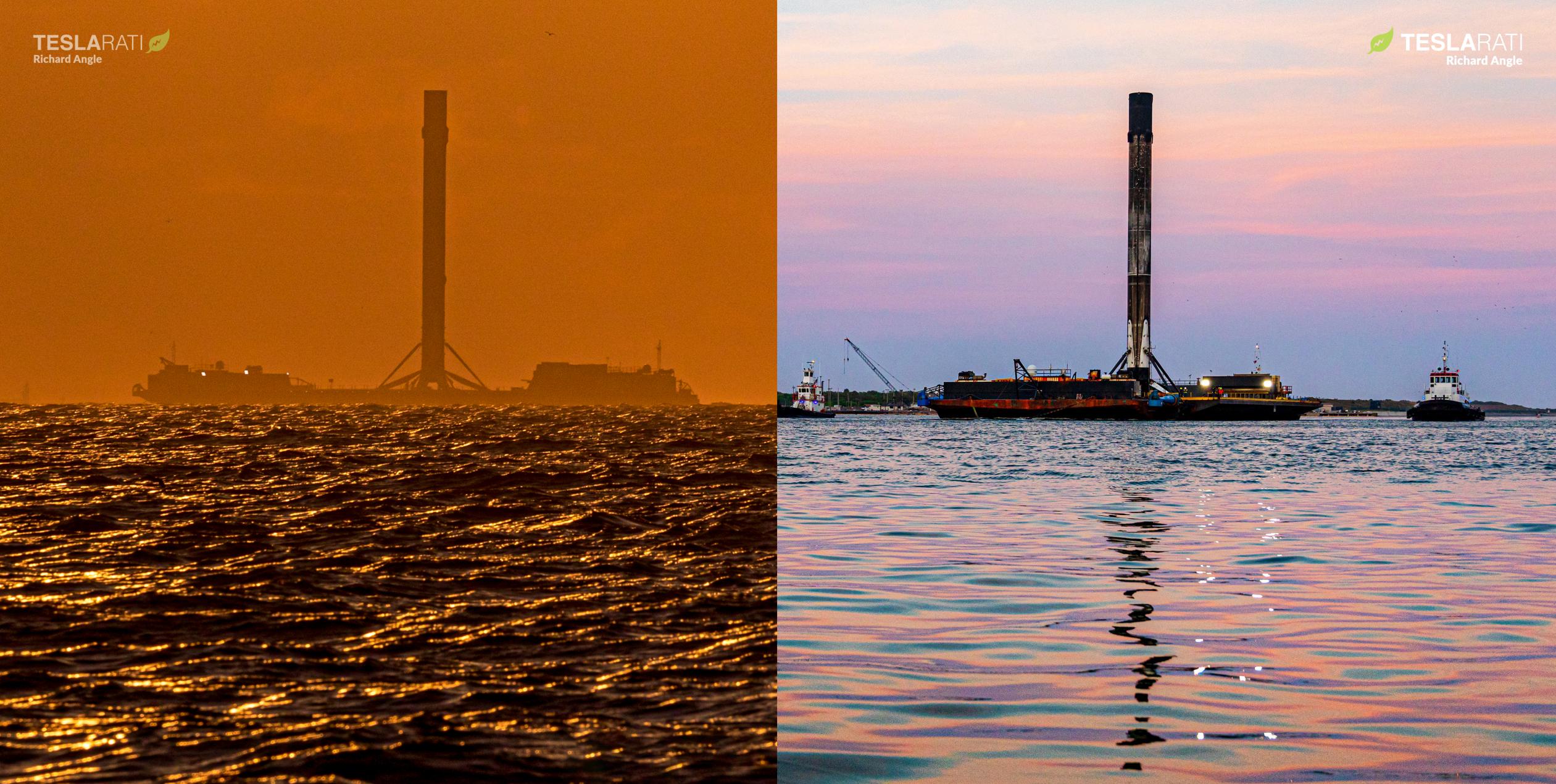
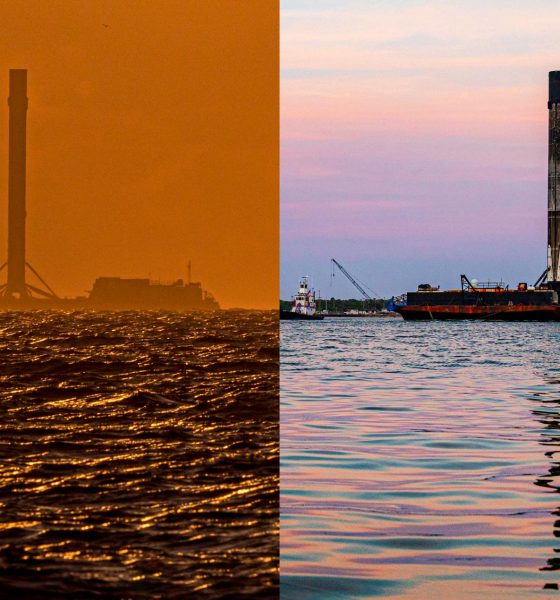
News
SpaceX Falcon 9 rockets and drone ship wow with sunset, sunrise port returns
With two back-to-back Starlink launches, SpaceX drone ship Of Course I Still Love You (OCISLY) has returned to port twice in two weeks with Falcon 9 boosters and some of the most beautiful sunrise and sunset backdrops yet seen.
Two days after its sixth successful launch and drone ship landing, Falcon 9 booster B1060 sailed into Port Canaveral on OCISLY around sunset on March 26th. Two weeks later, the same drone ship returned to port once again, this time carrying Falcon 9 booster B1058 back to land after a flawless seventh launch and landing and near-record-breaking 27-day turnaround.
Virtually identical beyond the boosters that launched them, both B1060 and B1058 were tasked with supporting two missions to deliver batches of 60 new Starlink satellites into low Earth orbit. Of the ten launches SpaceX has completed in 2021, eight have been Starlink missions, altogether placing 490 satellites weighing almost 130 metric tons (290,000 lb) into orbit.
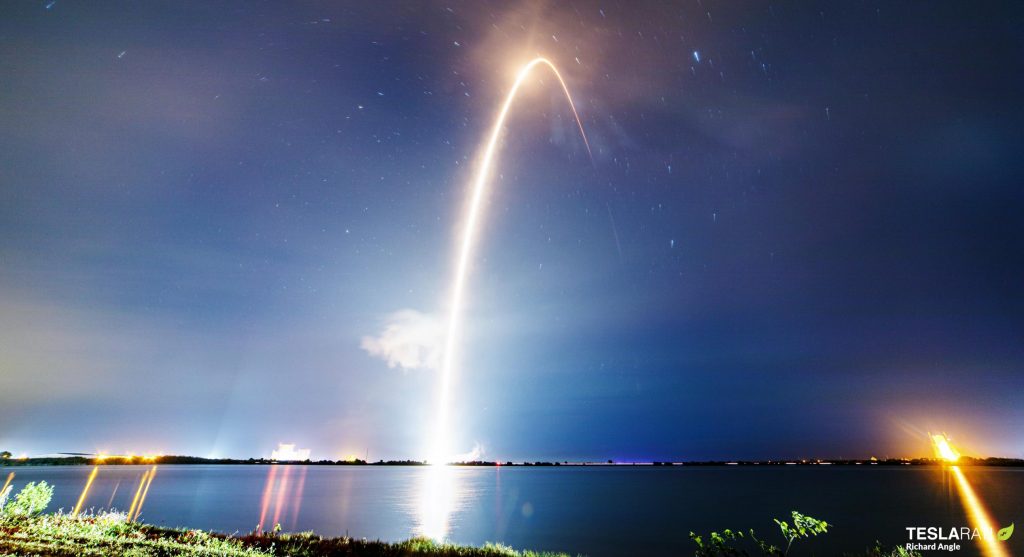
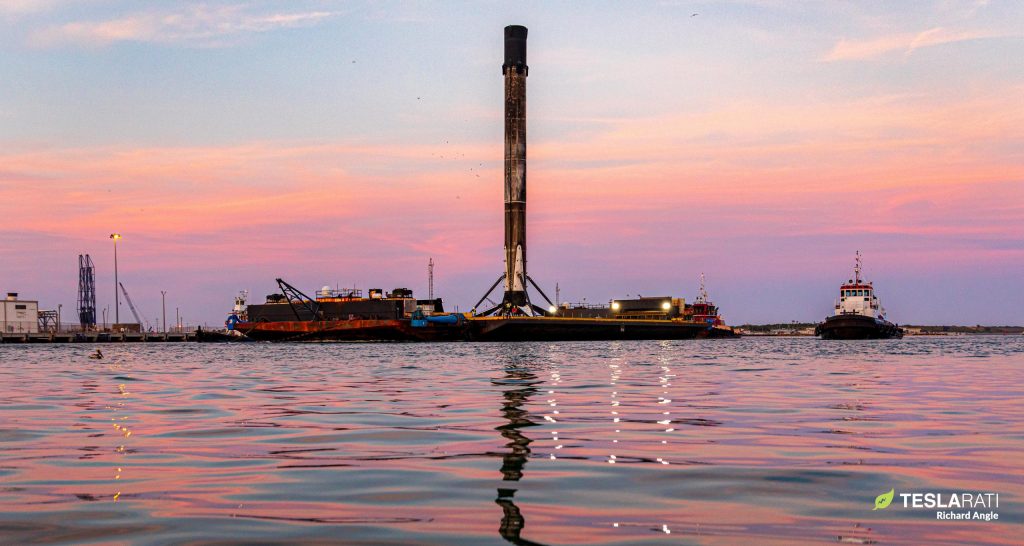
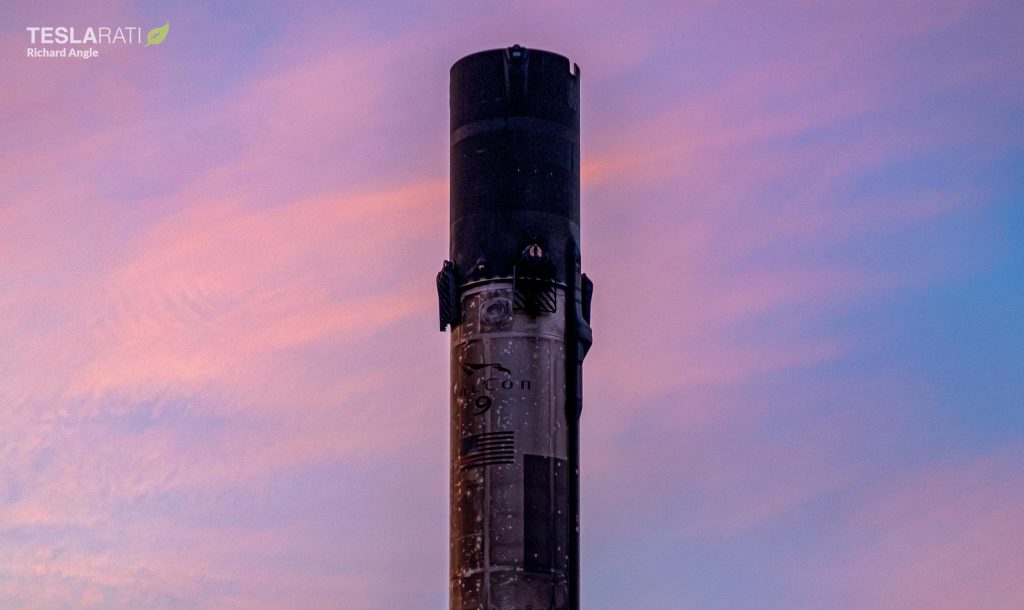
Incredibly, Falcon 9 B1058 and B1060 alone have been responsible for six of those ten launches, making the pair – in no uncertain terms – the shining workhorses of SpaceX’s rocket fleet. Put in a slightly different way, SpaceX is now regularly flying multiple Falcon boosters on an almost monthly basis. With just a handful of similarly-capable boosters, SpaceX could feasibly achieve 60+ Starlink launches annually while still maintaining an almost secondary fleet of (relatively) lightly-used boosters for customer missions.
As it turns out, SpaceX already has three once-flown Falcon 9 boosters of the same age (batch?) as B1058 and B1060 – at least two of which are waiting for crucial flight-proven debuts for NASA and the US military. After acing Crew Dragon’s operational Crew-1 astronaut launch debut last November, B1061 is scheduled to become the first flight-proven liquid rocket booster to launch astronauts with NASA’s Crew-2 mission on April 22nd. B1062, having successfully launched the US military’s GPS III SV04 navigation satellite in November 2020, is scheduled to launch a second GPS III satellite in July 2021 – a first for the US military.
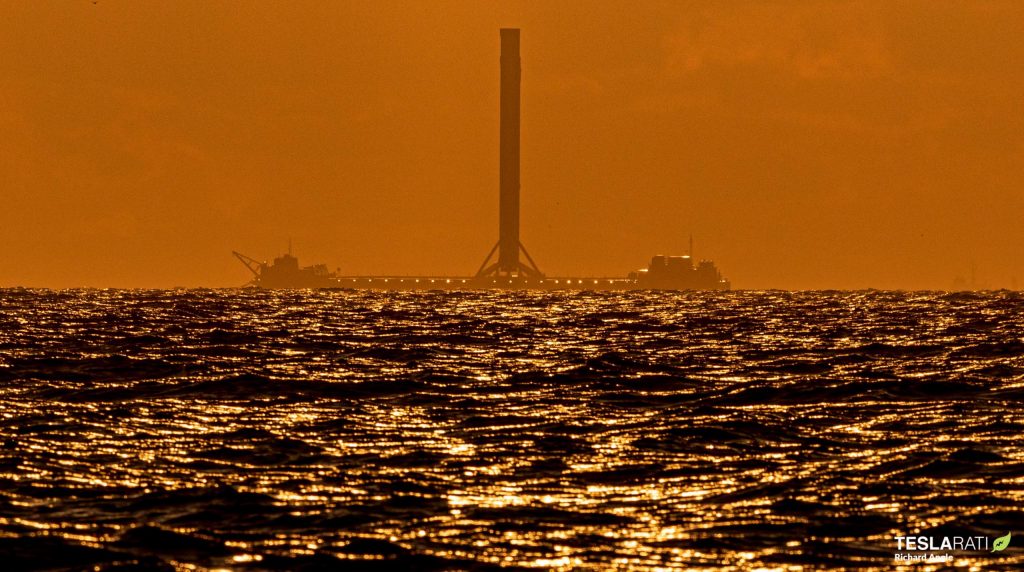
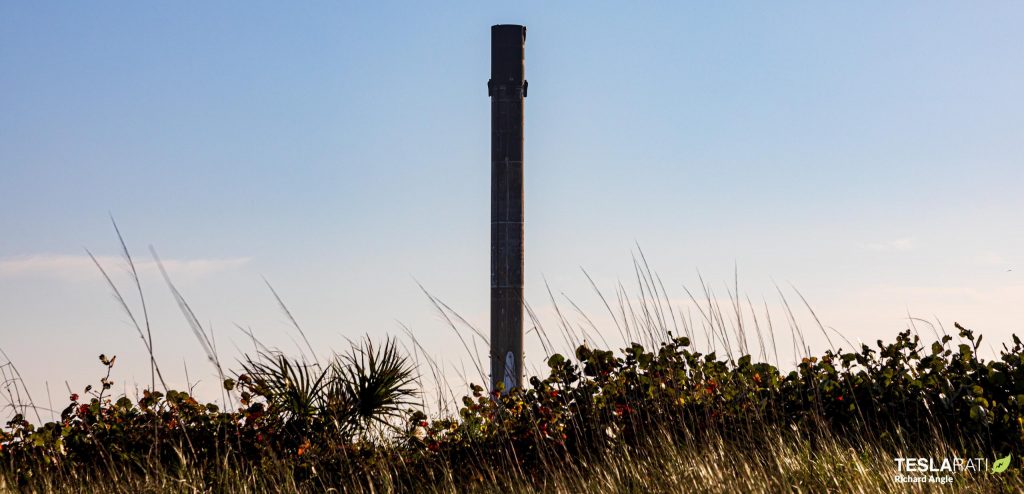
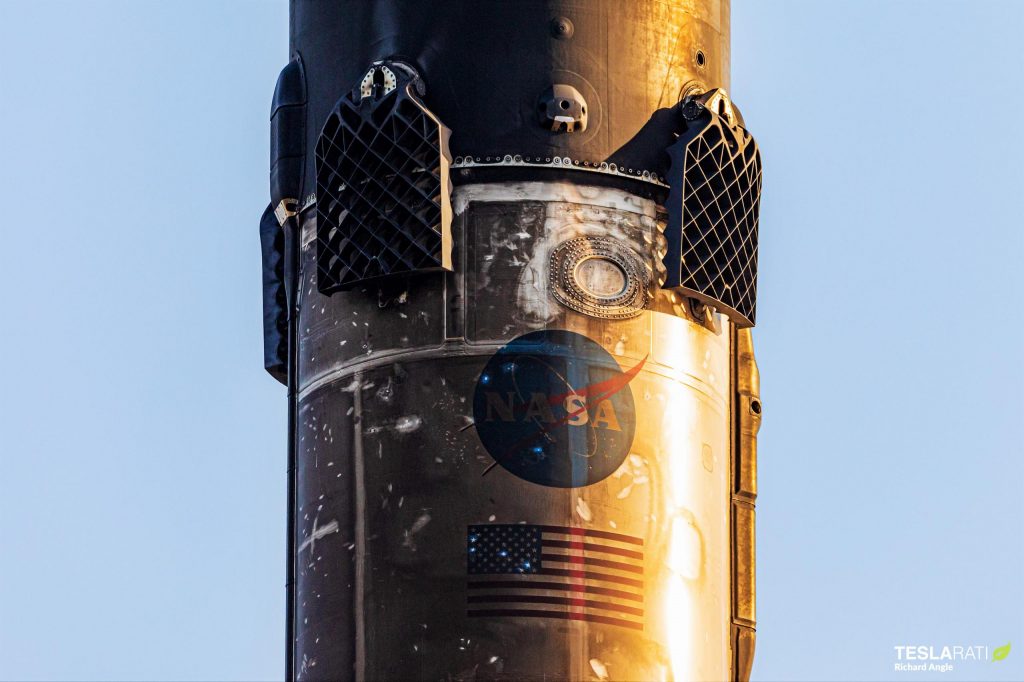
Meanwhile, Falcon 9 B1063 may have been transported from California to Florida after successfully launching NASA and ESA’s Sentinel 6A Earth observation satellite and completing SpaceX’s first Vandenberg launch in almost 18 months – also in November 2020. If all three of those new once-flown boosters were to enter SpaceX’s general-purpose fleet after their next major customer missions and prove to be as low-maintenance as B1058 and B1060, those five rockets alone could potentially support an annual cadence of 50-60+ Starlink launches.
It’s also possible that – having finally seen the clear viability of flight-proven rockets writ large – NASA and the US military will effectively choose to keep B1061, B1062, and possibly B1063 primarily in-house, so to speak. Depending on their contracts, by paying SpaceX a premium or forgoing discounts for flight-proven first stages, both could feasibly ensure that those boosters remain mostly (or totally) exclusive to NASA or US military missions.
Ultimately, whether SpaceX gets to add those comparatively new boosters to its Starlink and commercial fleet, B1058 and B1060 show no signs of stopping and – perhaps alongside B1049 and B1051 – could easily sail past their ten-flight milestones before the year is out. Many, many more spectacular drone ship recoveries to come, in other words.

News
Tesla gets a win in Sweden as union withdraws potentially “illegal” blockade
As per recent reports, the Vision union’s planned anti-Tesla action might have been illegal.

Swedish union Vision has withdrawn its sympathy blockade against Tesla’s planned service center and showroom in Kalmar. As per recent reports, the Vision union’s planned anti-Tesla action might have been illegal.
Vision’s decision to pull the blockade
Vision announced the blockade in early December, stating that it was targeting the administrative handling of Tesla’s facility permits in Kalmar municipality. The sympathy measure was expected to start Monday, but was formally withdrawn via documents sent to the Mediation Institute and Kalmar Municipality last week.
As noted in a Daggers Arbete report, plans for the strike were ultimately pulled after employer group SKR highlighted potential illegality under the Public Employment Act. Vision stressed its continued backing for the Swedish labor model, though Deputy negotiation manager Oskar Pettersson explained that the Vision union and IF Metall made the decision to cancel the planned strike together.
“We will not continue to challenge the regulations,” Petterson said. “The objection was of a technical nature. We made the assessment together with IF Metall that we were not in a position to challenge the legal assessment of whether we could take this particular action against Tesla. Therefore, we chose to revoke the notice itself.”
The SKR’s warning
Petterson also stated that SKR’s technical objection to the Vision union’s planned anti-Tesla strike framed the protest as an unauthorized act. “It was a legal assessment of the situation. Both for us and for IF Metall, it is important to be clear that we stand for the Swedish model. But we should not continue to challenge the regulations and risk getting judgments that lead nowhere in the application of the regulations,” he said.
Vision ultimately canceled its planned blockade against Tesla on December 9. With Vision’s withdrawal, few obstacles remain for Tesla’s long-planned Kalmar site. A foreign electrical firm completed work this fall, and Tesla’s Careers page currently lists a full-time service manager position based there, signaling an imminent opening.
News
Tesla Semi program Director teases major improvements

Tesla Semi Program Director Dan Priestly teased the major improvements to the all-electric Class 8 truck on Thursday night, following the company’s decision to overhaul the design earlier this year.
Priestley said he drove the Semi on Thursday, and the improvements appear to be welcomed by one of the minds behind the project. “Our customers are going to love it,” he concluded.
Just drove the redesigned Semi. Our customers are going to love it. https://t.co/KZ88sf1CDL
— Dan Priestley (@danWpriestley) December 19, 2025
The small detail does not seem like much, but it is coming from someone who has been involved in the development of the truck from A to Z. Priestley has been involved in the Semi program since November 2015 and has slowly worked his way through the ranks, and currently stands as the Director of the program.
Tesla Semi undergoes major redesign as dedicated factory preps for deliveries
Tesla made some major changes to the Semi design as it announced at the 2025 Annual Shareholder Meeting that it changed the look and design to welcome improvements in efficiency.
Initially, Tesla adopted the blade-like light bar for the Semi, similar to the one that is present on the Model Y Premium and the Cybertruck.
Additionally, there are some slight aesthetic changes to help with efficiency, including a redesigned bumper with improved aero channels, a smaller wraparound windshield, and a smoother roofline for better aero performance.
All of these changes came as the company’s Semi Factory, which is located on Gigafactory Nevada’s property, was finishing up construction in preparation for initial production phases, as Tesla is planning to ramp up manufacturing next year. CEO Elon Musk has said the Semi has attracted “ridiculous demand.”
The Semi has already gathered many large companies that have signed up to buy units, including Frito-Lay and PepsiCo., which have been helping Tesla test the vehicle in a pilot program to test range, efficiency, and other important metrics that will be a major selling point.
Tesla will be the Semi’s first user, though, and the truck will help solve some of the company’s logistics needs in the coming years.
News
Tesla dominates in the UK with Model Y and Model 3 leading the way

Tesla is dominating in the United Kingdom so far through 2025, and with about two weeks left in the year, the Model Y and Model 3 are leading the way.
The Model Y and Model 3 are the two best-selling electric vehicles in the United Kingdom, which is comprised of England, Scotland, Wales, and Northern Ireland, and it’s not particularly close.
According to data gathered by EU-EVs, the Model Y is sitting at 18,890 units for the year, while the Model 3 is slightly behind with 16,361 sales for the year so far.
The next best-selling EV is the Audi Q4 e-tron at 10,287 units, lagging significantly behind but ahead of other models like the BMW i4 and the Audi Q6 e-tron.
GOOD NEWS 🇬🇧 Tesla is absolutely crushing the UK electric vehicle market in 2025 💥
The numbers are in, and the dominance is clear. With an impressive amount of 42,270 vehicles delivered year-to-date, the brand now commands a solid 9.6% market share of the total auto market 🆒… pic.twitter.com/dkiGX9kzd0
— Ming (@tslaming) December 18, 2025
The Model Y has tasted significant success in the global market, but it has dominated in large markets like Europe and the United States.
For years, it’s been a car that has fit the bill of exactly what consumers need: a perfect combination of luxury, space, and sustainability.
Both vehicles are going to see decreases in sales compared to 2024; the Model Y was the best-selling car last year, but it sold 32,610 units in the UK. Meanwhile, the Model 3 had reached 17,272 units, which will keep it right on par with last year.
Tesla sold 50,090 units in the market last year, and it’s about 8,000 units shy of last year’s pace. It also had a stronger market share last year with 13.2 percent of the sales in the market. With two weeks left in 2025, Tesla has a 9.6 percent market share, leading Volkswagen with 8 percent.
The company likely felt some impact from CEO Elon Musk’s involvement with the Trump administration and, more specifically, his role with DOGE. However, it is worth mentioning that some months saw stronger consumer demand than others. For example, sales were up over 20 percent in February. A 14 percent increase followed this in June.








